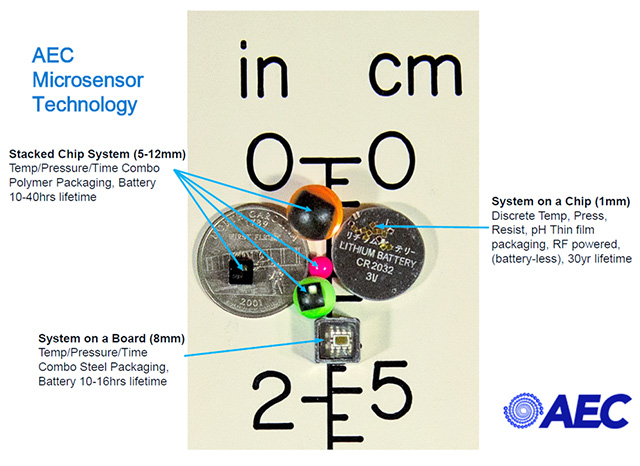Advanced Energy Consortium Technology Takes Next Step

Over the last 11 years, the Advanced Energy Consortium (AEC) has guided the creation of an entirely new area of research: nanotechnology applications that illuminate Earth’s subsurface. AEC member companies have invested over $50 million in this research, and over 40 patents have been generated by researchers from 32 universities across the globe. AEC technology is now taking the next step as practical applications for the technology approach final testing and development.
As the program evolved, and a new scientific language developed between nanotechnology researchers and oil industry scientists, broad research thrusts were eventually narrowed down to three practical AEC applications, or use cases, with solid potential for commercialization and benefit to member organizations and the industry: sensors, contrast agents, and payload delivery systems. The AEC has developed viable prototypes in each of these areas, which have been handed off to member organizations for further field testing and, eventually, manufacturing at industry scale.
At a recent gathering of member organizations, and representatives of invited potential member companies, members reported on their individual research progress.
Tiny AEC computerized sensors are now sophisticated enough to report downhole temperatures and pressures under real-world conditions using several data transfer methods, and their battery life has been extended exponentially over the last few years. One company reported that it is testing AEC sensors to report data from within flowlines and while attached to pipeline pigs. Another is testing their use both to report downhole temperatures before cementing well casing and to determine downhole cement integrity. A third member organization hopes to eventually create a network of these sensors underground to report broad subsurface conditions in real time.
AEC contrast agents help to map fracture patterns, fluid flow, and reservoir extent. Nanoscale electromagnetic proppants were recently validated as effective at mapping the extent of a hydraulic fracturing operation during a field test in South Texas. One member company is testing the use of AEC contrast agents to track subsurface fluid flow using external and remote monitoring stations. Another member is testing their use in fracture visualization and plans to place electromagnetic sensors in casing collars to receive data from downhole contrast agents.
AEC payload delivery systems have been developed to transport various chemicals within tiny capsules that open and release their cargoes under predetermined conditions, such as higher temperatures. One AEC member continues extensive testing of AEC payload delivery nanocapsules to transport acid deep into a well, with one potential application being the removal of mudcake from sidewalls. The company continues its experimentation with the nanocapsules as it moves closer to developing the technology to the point of commercialization.
Guest organizations at the AEC meeting were highly impressed with the level of nanotechnology innovation presented, and many expressed interest in joining the consortium. Meeting discussions emphasized that AEC applications are being considered outside of the oil and gas industry, and include potential use of the nanotechnology in geothermal systems, to map aquifers, in mining operations, and in waste-disposal monitoring, among other concepts. Membership in the AEC is open to any organization with an interest in pursuing this fascinating research and development.
For more information about the Advanced Energy Consortium and how to join, please contact the AEC program leader: Mohsen Ahmadian (512-471-2999; mohsen.ahmadian@beg.utexas.edu).
